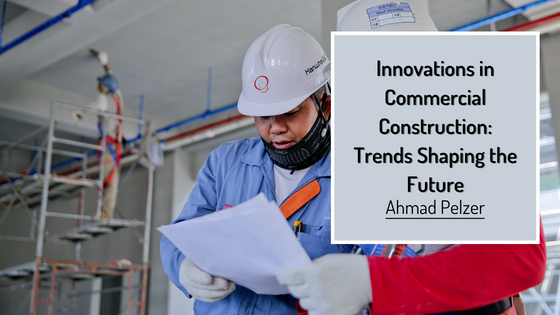Commercial construction is undergoing a significant transformation by introducing innovative technologies and practices. These advancements reshape the industry, driving efficiency, sustainability, and improved safety. Here are the latest trends in commercial construction, highlighting the innovations shaping the sector’s future.
- Prefabrication and Modular Construction: Prefabrication and modular construction methods are revolutionizing the commercial construction industry. These techniques involve assembling building components off-site in controlled factory settings, then transporting and assembling them on-site. Prefabrication offers faster construction timelines, reduced waste, improved quality control, and enhanced cost efficiency. Modular construction, in particular, enables greater flexibility and scalability, allowing for easy customization and future expansion.
- Building Information Modeling (BIM): Building Information Modeling (BIM) is a digital technology that enables the creation and management of detailed 3D models of buildings. BIM facilitates collaboration among architects, engineers, contractors, and other stakeholders throughout construction. It helps optimize design, identify and resolve potential conflicts, improve cost estimation, and streamline project management. BIM also enhances post-construction operations and maintenance, as the model is a valuable resource for facility management.
- Sustainable Construction Practices: Sustainability has become a significant focus in commercial construction. Green building practices, such as using environmentally friendly materials, optimizing energy efficiency, and implementing renewable energy solutions, are gaining prominence. Building designs now prioritize natural lighting, efficient HVAC systems, rainwater harvesting, and green roofs. Additionally, adopting sustainable certifications, like LEED (Leadership in Energy and Environmental Design), is becoming increasingly common to demonstrate a commitment to sustainability.
- Advanced Robotics and Automation: Robotics and automation are transforming construction sites, improving efficiency, and enhancing worker safety. Robots can perform repetitive and physically demanding tasks, such as bricklaying, concrete pouring, and material handling, with precision and speed. Drones are also used for site inspections, monitoring progress, and surveying. Automation technologies, including autonomous vehicles and robotic exoskeletons, are enhancing productivity and reducing the risk of on-site accidents.
- Augmented Reality (AR) and Virtual Reality (VR): Augmented Reality (AR) and Virtual Reality (VR) technologies are finding applications in commercial construction. These immersive technologies enable stakeholders to visualize projects in virtual environments before construction begins. AR and VR facilitate design reviews, client presentations, and training simulations, improving communication and minimizing errors. They also contribute to better project planning and coordination among various teams, reducing rework and cost savings.
- Smart Buildings and Internet of Things (IoT): The integration of IoT technologies in commercial construction is leading to the development of smart buildings. IoT sensors and systems enable real-time monitoring of building operations, including energy consumption, occupancy levels, and equipment performance. Smart buildings can optimize energy usage, enhance occupant comfort, and automate maintenance processes. IoT also enables the implementation of advanced security and access control systems, improving the overall safety of commercial properties.
The commercial construction industry is experiencing a wave of innovations transforming how buildings are designed, constructed, and operated. Prefabrication and modular construction, Building Information Modeling (BIM), sustainable practices, robotics and automation, augmented reality (AR) and virtual reality (VR), as well as smart buildings and the Internet of Things (IoT), are driving efficiency, sustainability, and safety in the sector. By embracing these trends, stakeholders in commercial construction can unlock numerous benefits, including accelerated project timelines, improved cost efficiencies, enhanced environmental performance, and optimized building operations. As the industry continues to evolve, staying at the forefront of these innovative practices will be crucial for success in the future of commercial construction.
